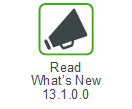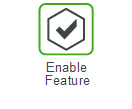Rotable Pooling
Rotable Pooling is a feature in Servigistics that allows you to set constraints to be enforced by part, among a set of locations. Rotable parts tend to be expensive, repairable, and have limited supply. Rotable pooling uses multi-echelon optimization techniques to recommend stock maximums at specific locations within the pool, based upon relative bang-for-buck efficiency, and compares the pooled performance against the inputs defined on the Rotable Pool Constraints page to determine viability. The Expected Pool Fill Rate and Expected Pool Wait Time (days) are evaluated using an aggregate SKU that represents an average of the pool members.
• Customer demands are aggregated from all the locations in the pool
• Effective Lead Time and Effective Order Quantity are averages for locations in the pool, weighted by customer demand
Each successive increase in pooled stock maximum is compared against the maximum stock maximum constraint to see if it is allowed, and the expected pooled fill rate and wait time are compared against the corresponding parameter targets to see if the recommendation offers sufficient performance. The lowest cost solution that satisfies the parameter targets, subject to the parameter maximum stock maximum constraints, and complies with SKU constraints and overrides is the result of this algorithm.
With Rotable Pooling, you can set constraints on parts that are expensive, repairable, and have limited supply, and “pool” the demand of all the locations for the part. Part-level constraints are set on the subset of parts to prevent carrying unnecessary amounts of those parts in the rotable pool. For parts in a scenario that are using Rotable Pooling, the Inventory Optimization calculation treats the demand and stock levels as though they were at one shared location. For example:
• Part A is stocked in Houston, and has a demand of 5
• Part A is also stocked in Chicago, and has a demand of 13
If you were using Service Groups, the demand for those 2 locations would be averaged, making the demand of Part A = 9
The Rotable Pool feature considers all of the demand for both locations, making the demand of Part A = 18.
The Rotable Pooling feature should not be used for planning high volume parts. The intent is for use with expensive, repairable parts that have limited supply. |
Processing Notes
When a scenario is calculated or recalculated and Rotable Pooling is enabled, overrides and constraints are processed as follows:
• For a part, a rotable pool needs to contain locations with external demands.
• Fill Rate and Wait Time are calculated using only external demand in the pool.
• All pre-optimization SKU Overrides and SKU Constraints are respected.
• All Minimum Pool Fill Rate Override and Maximum Pool Wait Time Override values are applied before the Service Group Optimization process.
• Pool Maximum Stock Maximum constraints are enforced post-optimization.
Service Group targets may be violated due to stock level reductions. |

